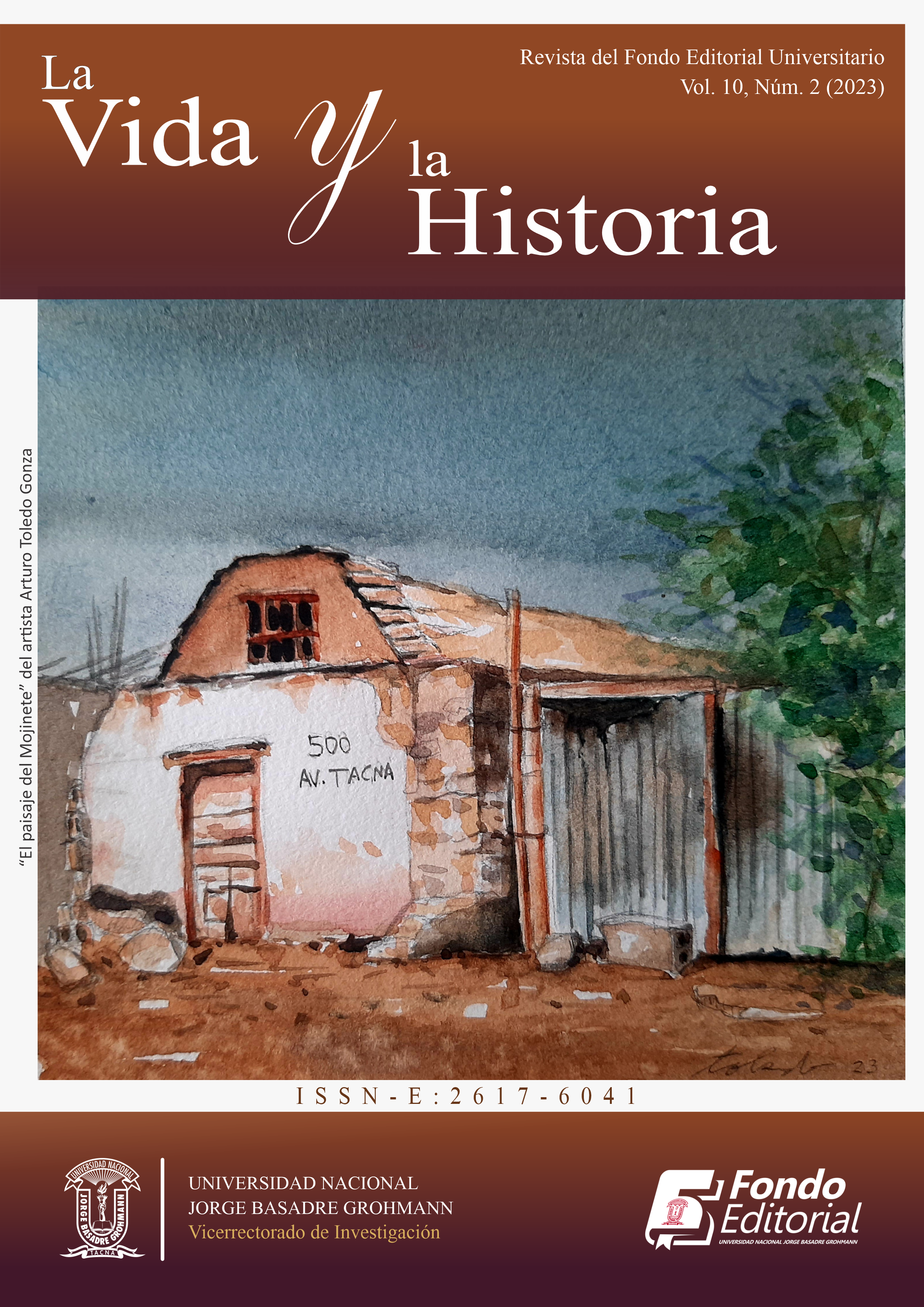Intelectuales y estrategias de legitimación del leguiismo en torno a la reincorporación de Tacna al Perú (1929)
Main Article Content
Abstract
This article explores the construction of the memory of captivity and the reincorporation of Tacna into Peru after the War of the Pacific. It examines the reactions generated by the 1929 Treaty of Lima and the role of the newspaper La Patria in promoting a positive view of this process. The discourse of memory highlights heroism, resistance, and regional identity, projecting a future of progress and collaboration between Peru and Chile. However, it considers the political influence and the need to legitimize the government of Leguía in the face of economic crisis and unemployment in the region. The article analyzes how this discourse intertwines with other official discourses and the political and social tensions of the time, and examines the role of key intellectuals in the legitimization of the government. The aim is to understand the construction and implications of this memory in the historical and political context.
Downloads
Article Details
References
Cavagnaro, L. (2019). Materiales para la historia de Tacna. Tomo XXVI: Reincorporación (1927-1930). EGESUR.
Choque, E. (2011). Del mito del adanismo independentista al mito de la resistencia antichilena. Nueva Historia. Revista de investigaciones históricas y ciencias sociales, 5.
Choque, E. (2015). Historia de Tacna. Una síntesis histórica de sus pueblos. Tacna: Instituto de Ciencias Sociales del Perú.
Hartog, F. (2007). Regímenes de historicidad: presentismo y experiencias del tiempo. Universidad Iberoamericana.
Hualpa, R. (2019). La heroicidad de la mujer tacneña. Ediciones Apu Comayre.
Klarén, P. (2012). Nación y sociedad en la historia del Perú. Instituto de Estudios Peruanos.
Laclau, E. (2015). La razón populista. Fondo de Cultura Económica.
Millones, I. (2009). Odio y venganza: Lima desde la posguerra con Chile hasta el Tratado de 1929. En: Claudia Rosas Lauro (ed.). El odio y el perdón en el Perú: siglos XVI al XXI. Fondo Editorial de la PUCP (pp. 147-168).
Mouffe, C. (2009). En torno a lo político. Fondo de Cultura Económica.
Panty O. (2001). Función orientadora en la prensa escrita. Editorial e Imprenta Educa.
Panty, O. (1999). Historia de la Prensa Escrita en Tacna. Universidad Nacional Jorge Basadre Grohmann.
Panty, O. (2015). La Historia crítica interpretativa y sus criterios básicos. Universidad Nacional Jorge Basadre Grohmann.
Pastor, M. (2017). Construcciones y persistencias identitarias en Tacna (1940-2017). La tensión entre tacneños y puneños por su afirmación cultural en la ciudad [Tesis de maestría. Universidade Federal da Integração Latino-Americana].
Perla, J. (2022). José María Barreto Bustios: “Justo entre las naciones”. https://mjp.org.pe/wp-content/uploads/2022/11/Jose-Maria-Barreto-Justo-entre-las-naciones.pdf
Pollarolo, G. (2019). La construcción de la “Memoria del cautiverio” en dos textos patrióticos. Denefri, F. (Ed.). Ni amar ni odiar con firmeza: cultura y emociones en el Perú posbélico (1885-1925). Fondo Editorial de la PUCP (pp. 251-278).
Rueda, N. (1982). Historia del Departamento de Tacna. Southern Perú.
Schmitt, C. (2015). El concepto de lo político. Struhart & Cía.
Skepsis, W. (2014). Literatura y política: el caso de Carlos Alberto González Marín y la generación tacneña de los años veinte.
Archivo Regional de Tacna
La Patria. (1929).
